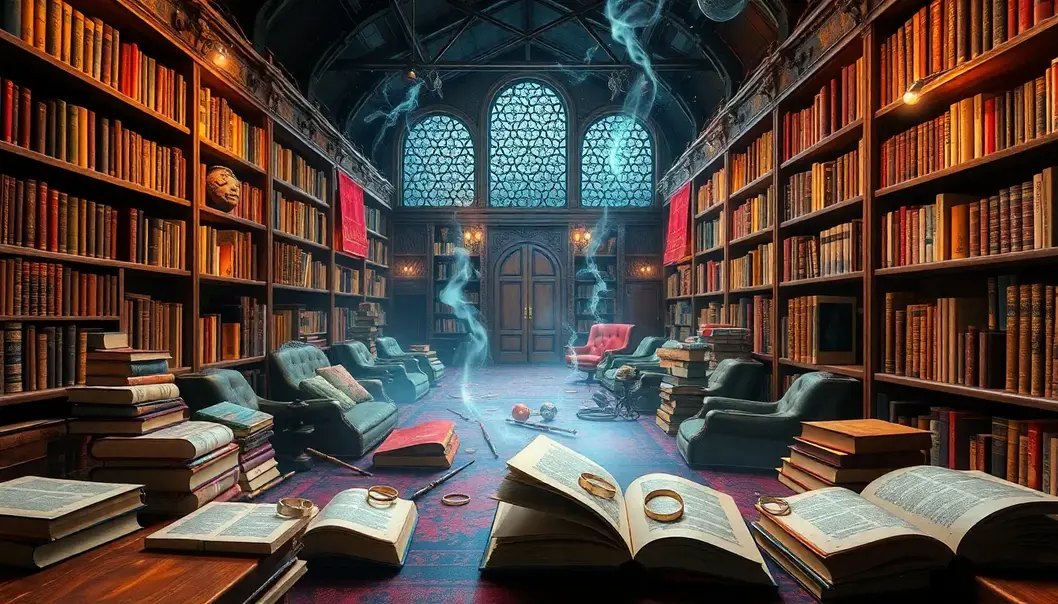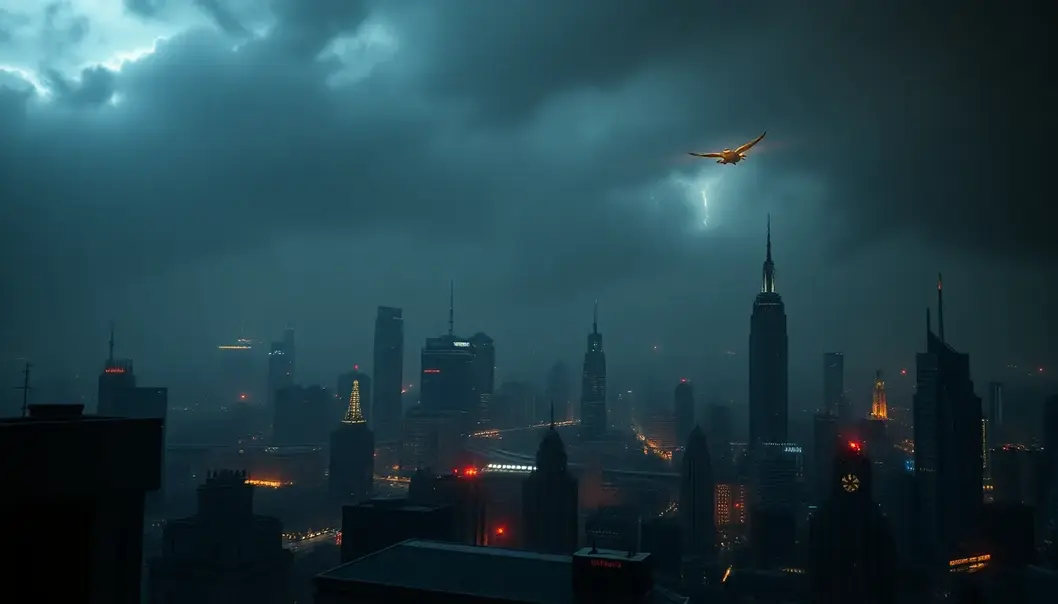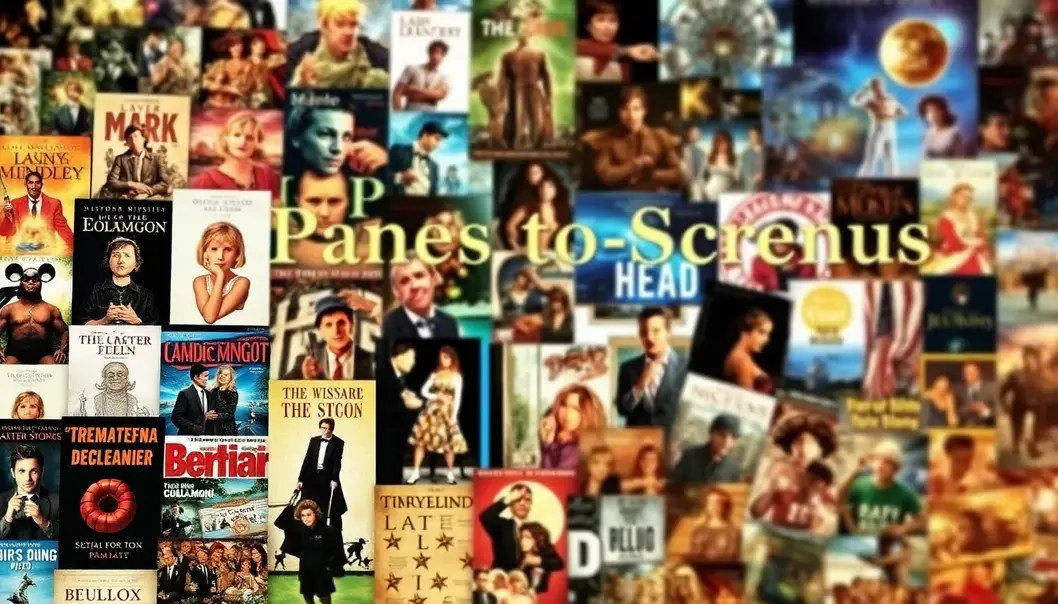Ever wondered what fuels the magic behind blockbuster movies? Often, the spark comes from a book. That’s right, some of the biggest hits on the silver screen started as ink on paper, painting vivid worlds that captured readers’ imaginations before captivating moviegoers worldwide. Young adults, particularly, are drawn into these vibrant stories, eager to see their favorite characters and plots transform from text to thrilling screen scenes. Dive with us as we explore the literary treasures that inspired cinematic marvels. We’ll uncover how these stories made the leap from bookshelves to Hollywood, creating timeless entertainment and leaving a lasting impact on both media.
Enchanted Realms: Fantasy Books That Became Movie Classics

Few genres have transported audiences from the printed page to the silver screen as vividly as fantasy. The imaginative worlds of Harry Potter and The Lord of the Rings exemplify this transformation, enchanting both readers and viewers alike. These narratives, which delve into realms of magic and myth, illustrate the power of fantasy literature to inspire cinematic masterpieces.
When J.K. Rowling penned the Harry Potter series, few could have predicted how these books, centered on a young wizard’s journey, would captivate millions. The transition from page to screen further expanded the wizarding world’s reach, introducing iconic locations and complex characters in a visual medium that brought every spellbinding detail to life. This film adaptation not only delighted existing fans but also drew new audiences into its magical universe, redefining the fantasy genre’s presence in pop culture.
Similarly, J.R.R. Tolkien’s The Lord of the Rings trilogy set a gold standard for fantasy literature long before its cinematic debut. Tolkien’s intricate world-building and epic storytelling invited readers into a universe rich with history and legend. The film adaptations, known for their breathtaking visuals and faithful attention to detail, elevated the series to new heights. The commitment to preserving Tolkien’s vision found resonance with audiences, underscoring the trilogy’s timeless appeal.
In both instances, these adaptations achieved success by honoring the essence of their literary sources while embracing the unique strengths of cinema. The use of innovative special effects and expansive storytelling techniques allowed these films to push boundaries and captivate viewers. The magic of seeing beloved characters and fantastical settings materialize on screen played a crucial role in engaging audiences, young and old alike.
This seamless blending of literature and film not only brought these stories to a wider audience but also sparked a resurgence in fantasy media. The intrinsic values of bravery, friendship, and perseverance that these stories champion resonate deeply with fans, offering timeless messages within their enchanted realms.
Through this remarkable translation from book to film, both Harry Potter and The Lord of the Rings affirm the enduring significance of fantasy. They demonstrate how literature’s richest worlds can be reimagined to enthrall new generations, ensuring these enchanted realms continue to inspire dreamers and adventurers everywhere.
From Dark Pages to Thrilling Screens: Dystopian Adventures

Dystopian novels like The Hunger Games and Divergent have captivated readers with their dark yet intriguing portrayals of future societies. These stories explore themes of control, rebellion, and survival, resonating deeply with audiences seeking tales that challenge societal norms and provoke thought.
In The Hunger Games, Suzanne Collins introduces readers to Panem, a nation divided into districts and controlled by an oppressive Capitol. The narrative centers around Katniss Everdeen, a resourceful young woman thrust into a deadly competition. The book’s intense action and emotional depth kept readers on edge, yearning for more.
When The Hunger Games transitioned from page to screen, its visual storytelling magnified the existing tension and urgency. Jennifer Lawrence’s portrayal of Katniss brought a powerful vulnerability to the character, strengthening the film’s impact. The movie adaptations maintained the book’s thematic essence, emphasizing the stark contrasts between the districts and the Capitol, a visual testament to the story’s core conflict.
Similarly, Veronica Roth’s Divergent series explores a world where society is divided into factions based on human virtues. Protagonist Tris Prior faces a journey of self-discovery and rebellion that challenges the status quo. The novel’s compelling narrative and engaging characters drove its popularity, eventually leading to its cinematic adaptation.
The Divergent films embraced the series’ dynamic world-building and internal struggles. Visual effects and thrilling action sequences heightened the franchise’s allure, capturing audiences who long for tales of courage and identity in the face of disorder. Shailene Woodley’s portrayal of Tris lent authenticity, making the viewers connect profoundly with her quest.
While the source material for both series set a high bar, the films offered unique interpretations that expanded their reach. These adaptations highlight the distinct artistic challenges in balancing readers’ expectations with cinematic storytelling. They also underscore the ability of dystopian narratives to address contemporary societal issues through allegory and spectacle.
The success of these films can partially be credited to a growing appetite for dystopian content that challenges and entertains. As adaptations of The Hunger Games and Divergent illustrate, the transition from page to screen presents an opportunity to explore complex themes visually, drawing in diverse audiences and revitalizing interest in the source material. The profound impact of these narratives continues to echo, reminding us of the power and versatility inherent in dystopian storytelling.
Final words
Books have always been a gateway to other worlds, filled with magic, adventure, and introspection. When these stories transition to film, they gain a new life that extends the narrative and reaches wider audiences. For young adults, these adaptations offer both familiarity and novelty, allowing them to see beloved stories portrayed visually. It’s the symbiosis of these mediums that continues to ignite imaginations. As you explore this fascinating cross-section of literature and cinema, consider where the next great adaptation might come from, and remember that every epic on screen may have first been a quiet, page-turning adventure.
Immerse yourself in these compelling stories by checking out the original books today!
Learn more: https://www.yourfavoritebookstore.com
About us
Your Favorite Bookstore offers a curated selection of bestselling books that inspired blockbuster movies. Dive into the stories behind the films and experience the source material that fueled hit adaptations. From fantasy realms to dystopian landscapes, find your next literary adventure with us. Discover why these books captured the imaginations of filmmakers and readers alike, and explore our collection today.

